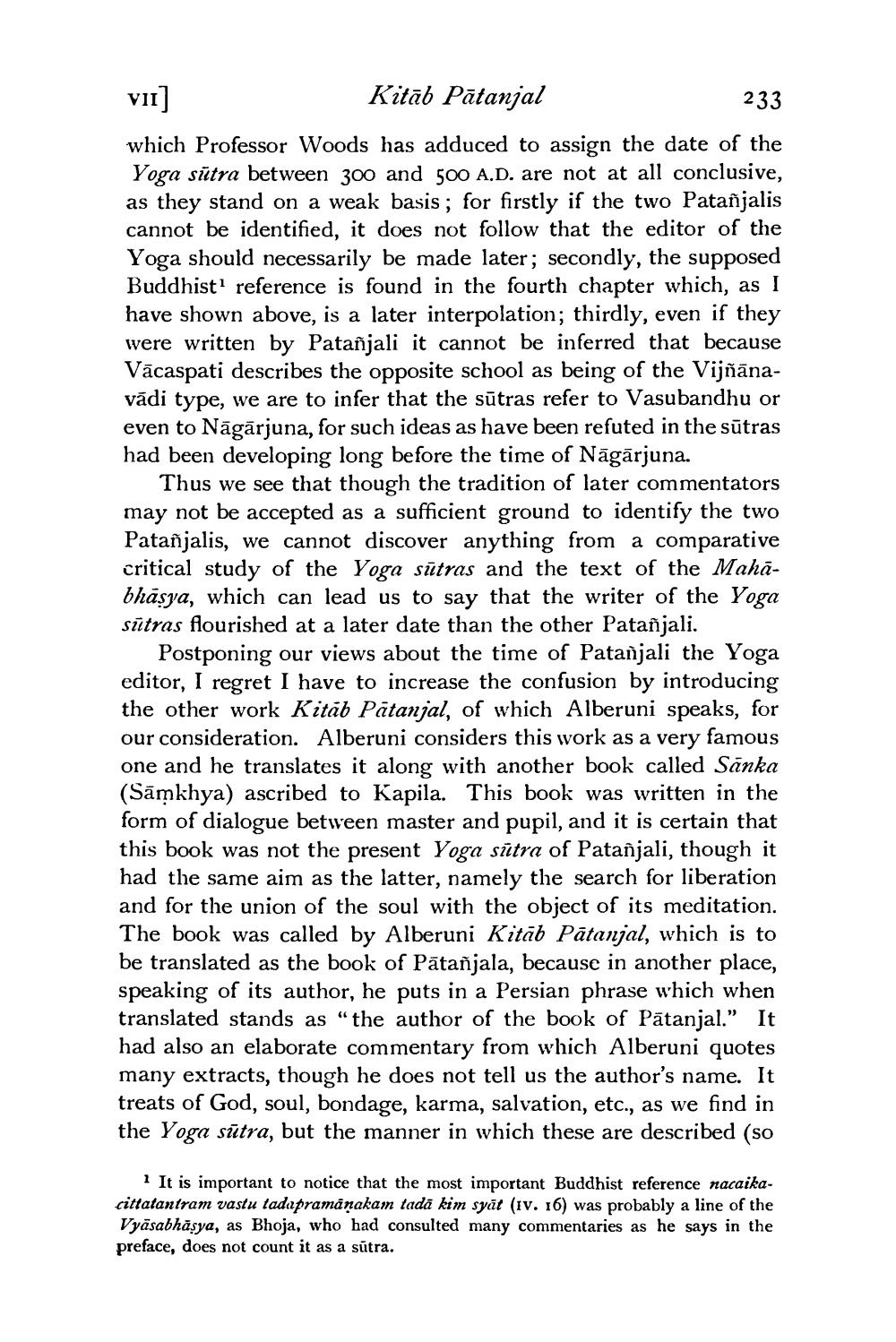________________
VII] Kitāb Pātanjal
233 which Professor Woods has adduced to assign the date of the Yoga sätra between 300 and 500 A.D. are not at all conclusive, as they stand on a weak basis; for firstly if the two Patañjalis cannot be identified, it does not follow that the editor of the Yoga should necessarily be made later; secondly, the supposed Buddhist reference is found in the fourth chapter which, as I have shown above, is a later interpolation; thirdly, even if they were written by Patañjali it cannot be inferred that because Vācaspati describes the opposite school as being of the Vijñānavādi type, we are to infer that the sūtras refer to Vasubandhu or even to Nāgārjuna, for such ideas as have been refuted in the sūtras had been developing long before the time of Nāgārjuna.
Thus we see that though the tradition of later commentators may not be accepted as a sufficient ground to identify the two Patañjalis, we cannot discover anything from a comparative critical study of the Yoga sūtras and the text of the Mahābhāsya, which can lead us to say that the writer of the Yoga sūtras flourished at a later date than the other Patañjali.
Postponing our views about the time of Patanjali the Yoga editor, I regret I have to increase the confusion by introducing the other work Kitāb Patanjal, of which Alberuni speaks, for our consideration. Alberuni considers this work as a very famous one and he translates it along with another book called Sanka (Sāmkhya) ascribed to Kapila. This book was written in the form of dialogue between master and pupil, and it is certain that this book was not the present Yoga sutra of Patanjali, though it had the same aim as the latter, namely the search for liberation and for the union of the soul with the object of its meditation.
The book was called by Alberuni Kitāb Patanjal, which is to be translated as the book of Pātañjala, because in another place, speaking of its author, he puts in a Persian phrase which when translated stands as “the author of the book of Pātanjal.” It had also an elaborate commentary from which Alberuni quotes many extracts, though he does not tell us the author's name. It treats of God, soul, bondage, karma, salvation, etc., as we find in the Yoga sūtra, but the manner in which these are described (so
It is important to notice that the most important Buddhist reference nacaikacittatantram vastu tadapramánakam tada kim syāt (iv. 16) was probably a line of the Vyäsabhāsya, as Bhoja, who had consulted many commentaries as he says in the preface, does not count it as a sūtra.




